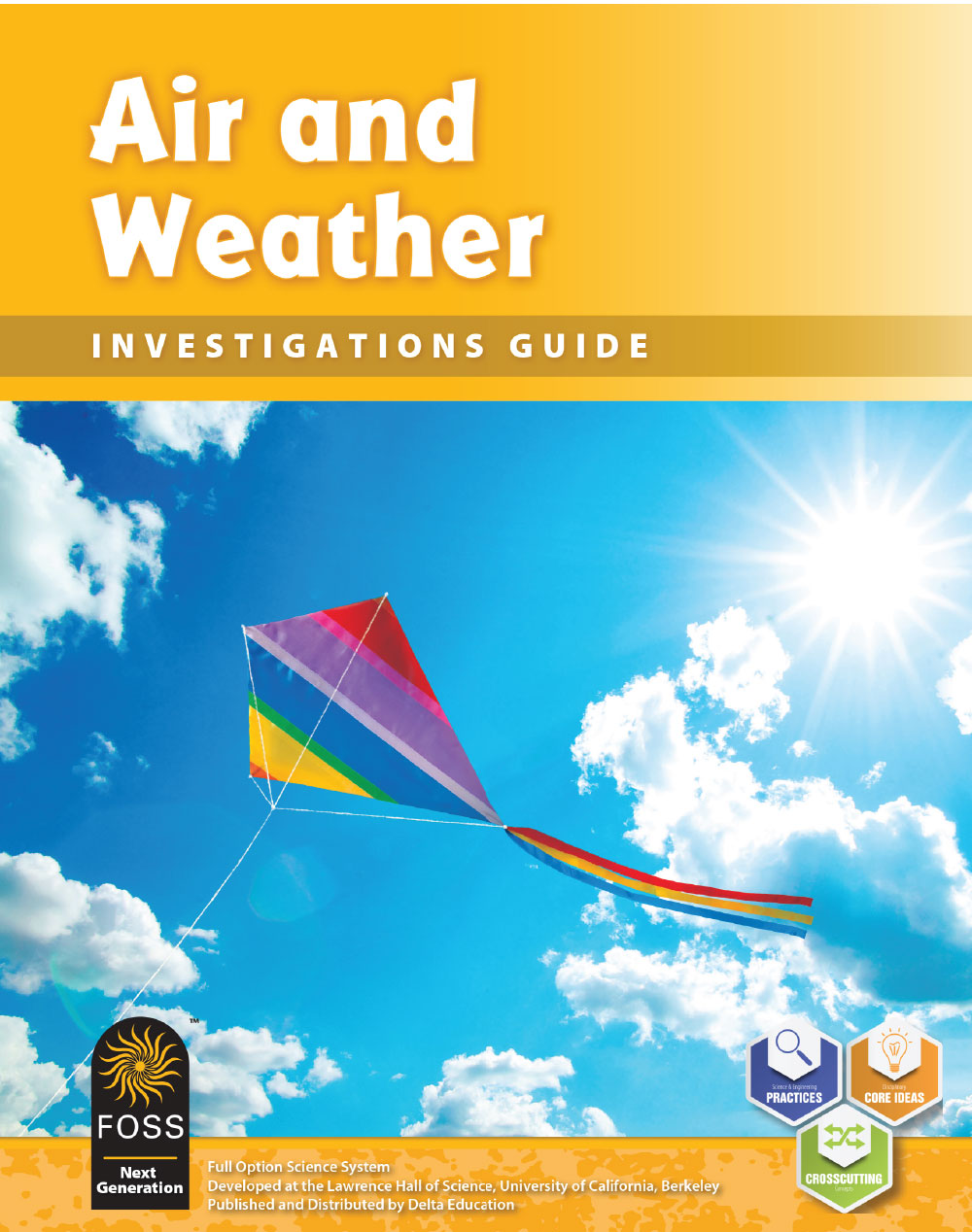FOSS Next Generation Air and Weather
Grade 1

In the Air and Weather Module, students turn their focus to the sky to make observations that will heighten their awareness, curiosity, and understanding of Earth’s dynamic atmosphere and the observable patterns of objects in the sky. Students explore the natural world by using simple instruments to observe and monitor change.
Investigation 1: Exploring Air
Students explore properties of a common gas mixture—air. They experience air as matter, discovering that it takes up space and can be compressed, and that compressed air builds up pressure that can push objects around. Then they construct and compare parachutes and balloon rockets that use air.
Investigation 2: Observing the Sky
Students use instruments to observe and record weather over 4–8 weeks on a class calendar and in science notebooks. They monitor temperature with a thermometer and rainfall with a rain gauge, and learn to identify three basic cloud types by matching their observations with a cloud chart.
Investigation 3: Wind Explorations
Students look for evidence of moving air. They observe and describe wind speed using pinwheels, an anemometer, and a wind scale. They observe bubbles and construct wind vanes to find the wind’s direction. By flying kites, students feel the strength of the wind and the direction it is moving.
Investigation 4: Looking for Change
Students organize monthly weather data, using graphs to describe weather trends. They continue to monitor weather throughout the year to compare the seasons and look for weather patterns. At home, they make observations of the night sky, looking for observable changes in weather conditions as well as in objects in the sky (the Sun, the Moon, and the stars). Students are introduced to the changing location of the Sun in the sky and the changing appearance of the Moon.